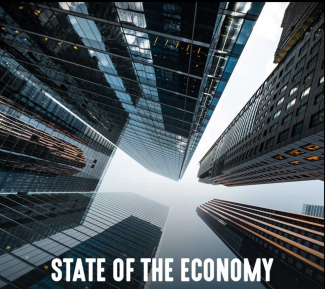
Quarterly Newsletter to Clients Q2
Big question: how are the economy and market doing?
With the year more than half over and markets on a spree, it's an important question to
consider.
Imagine the stock market as a roller coaster ride at an amusement park. In the past few months,
we've seen the coaster climb up and take exciting twists and turns, representing different
industries and sectors getting into the fun. The person controlling the ride (the Federal Reserve,
or Fed) recently stopped increasing the speed (raising interest rates), which has caused the
spectators (investors) to breathe a sigh of relief.
They're relieved because they feel the ride (the U.S. economy) has taken the rapid speed
changes (rate hikes) pretty well, and the coaster hasn't gone off the rails (economic recession).
However, we believe a slowdown (economic contraction) might be coming. In particular, the
most exciting parts of the ride (strongly performing market segments) seem overpriced
compared to the calmer parts (other domestic equities), and the ride operators have already
adjusted their future plans (forecasted earnings) accordingly.
Inflation continues its downward spiral.
The issue of inflation is a bit like a leaky roof in your house (shelter prices) - it makes up a
significant part of the overall cost of living (services inflation). The problem is, the cost of repairs
(CPI calculation) reflects the state of the house a year ago. Although the house price (home
prices) peaked last summer and has remained steady since then, we believe the overall cost of
living (inflation) will decrease.
The latest data for June shows that inflation fell for the 12th month in a row to an annual rate of
3%.1 That's a significant improvement from June of last year when inflation soared to 9.1%.
It also puts the Federal Reserve in the difficult position of deciding whether or not to raise rates
again after pausing in June. The odds are good that the Fed will hike rates again at least once
more this year, though if inflation continues to decline, policymakers might choose to hold off.2
The economy continues to shrug off recession worries.
The U.S. economy can be thought of as a two-speed bike, with the services side of the
economy like the high gear, pushing us along nicely as people are spending more on services.
However, we think there are signs the high gear (services sector) is getting worn out
(weakening), and the brakes (previous Fed rate hikes and quantitative tightening, tightened
bank lending) will eventually slow the bike down (push the economy into a recession).
As for wages, imagine companies and workers in a game of tug-of-war. If there are fewer
workers than jobs, companies will have to offer more (higher wages) to pull workers their way.
Those extra wages could cover higher costs, increasing the risk of ongoing inflation.
You might be wondering if we've already had a recession, given the strange economic times
we've been through with lockdowns, job losses, and a shift in consumer spending. Add to that
the massive financial stimulus at the start of the pandemic and its subsequent withdrawal, it's
been a wild ride, like a movie with a plot twist every half hour.
So, are we currently in a recession, or have we been in one already? It's hard to say. A July 10
Federal Reserve model projects that the economy grew 2.3% in Q2.3 What we do know is that
despite the rollercoaster ride, there are still some enjoyable parts left (cheaper market
segments), especially if the ride cools off gradually (mild recession).
The job market is still robust, even in sectors sensitive to high interest rates.4
All told, the economy has added 1.67 million jobs in 2023 so far.5 That's significantly less than
the 2.67 million jobs added in the first half of 2022, but it shows that the labor market still has
legs. However, job growth may be cooling in the private sector, which could be a warning sign of
a slowing economy.6
Market psychology has been trending toward optimism (and greed).7
The stock market generally reflects expectations about the economy and business performance.
While economic data seems to support the optimistic view, markets might be a little overheated.
That means pullbacks and corrections are likely, even if we're already in the early stages of a
bull market.
Here's some good news: They happen pretty regularly, as the chart below shows.8
You can see by the red dots that even years with strong market performance experienced some
pretty big drops. That's normal and not a reason to worry.
So, what happens next in markets?
We see the potential for volatility ahead. While the rally seems to have spread beyond tech
stocks, sentiment could easily swing the other way.
If you're still unsure about the rollercoaster ride (markets) or your amusement park ticket
(portfolio), feel free to ask us. We're here to make the ride as fun and smooth as possible.
Bottom line: We’re watching markets, and reading reports, and we'll be in touch as needed.

